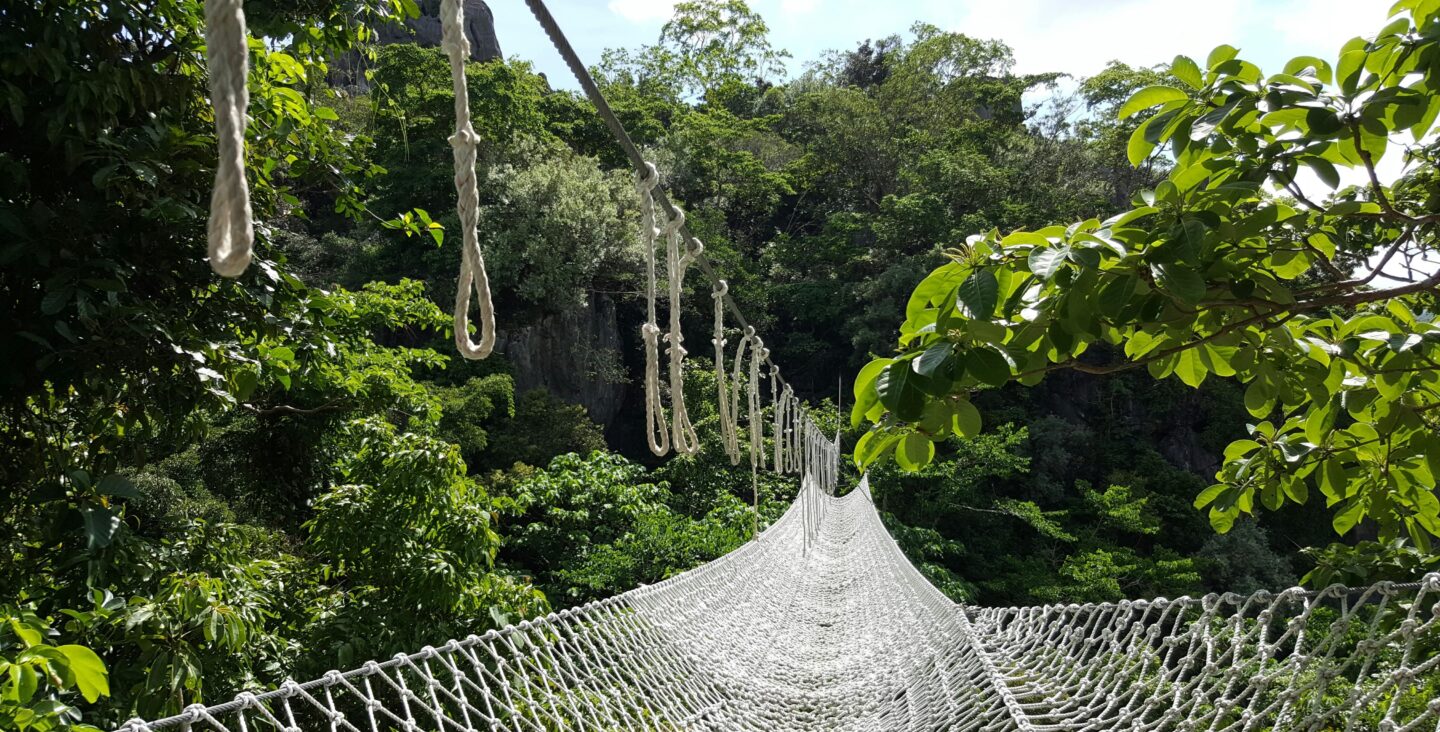
How to give feedback: Your six-part checklist
Feedback can feel like an emotional minefield, yet it is a leadership responsibility. This first article explores three essentials: timing, intent, and balance....

by Binna Kandola Published November 8, 2024 in Talent • 9 min read • 
The success of an organization hinges not just on the performance of individual employees but also on the collective potential that each person brings to the table. Helping employees reach their full potential is more than personal career growth; when leaders foster environments where diverse talents are encouraged to thrive, they unlock new levels of creativity and problem-solving for the whole organization.
To understand how to help employees reach their full potential, it’s helpful first to define what this means within the workplace. Reaching one’s full potential at work involves more than just performing tasks well; it is about enabling staff to identify and develop their unique skills and abilities while aligning them with the organization’s goals.
Companies often have predefined ideas about the roles of employees, but true potential is realized when people are made aware of a broader spectrum of possibilities.
That is especially true for employees who come from underrepresented groups and may have taken to heart limiting beliefs about their career potential. For example, a woman or a person of color might believe there is a “glass ceiling” that curbs their progress within the organization.
By providing these employees with options they may not have previously considered — as well as offering the necessary opportunities to develop their potential — companies can help them aspire to and achieve roles they might have thought were out of reach.
This benefits the individual and brings fresh perspectives and ideas into the leadership roles they eventually ascend to. And that is known to be fertile ground for innovation and agility.
However, it’s not that simple. Bias — both conscious and unconscious — acts as a straightjacket on an employee’s ability to reach their full potential. These biases are deeply rooted in societal norms and stereotypes, which (unfortunately) often go unchallenged within many workplaces.
Traditional leadership typecasts — often modeled on the image of a white, straight, able-bodied male — exclude most would-be leaders from diverse backgrounds. Such typecasting creates invisible barriers that prevent many people from being recognized for their true capabilities.
For instance, meta-analysis research about leader stereotypes has shown that people are more likely to associate leadership qualities with men than women, leading to fewer women being considered for leadership roles. Similarly, people of color are often overlooked for leadership positions due to stereotypes, such as a lack of people skills or being aggressive, that unfairly question their leadership abilities.
Moreover, even physical appearance, such as body size, can influence leadership opportunities, with those of a slenderer build more likely to be considered for top roles than those who are overweight, according to research that we carried out last year. These stereotypes are unfair, of course, but also detrimental to organizations because they prevent the best talent from rising to the top, thereby limiting the company’s potential.

“Companies often have predefined ideas about the roles of employees, but true potential is realized when people are made aware of a broader spectrum of possibilities. ”
So, how do we eliminate such biases and truly value differences within the workplace to enable more people to understand and reach their potential? One of the most effective strategies is to foster a culture of feedback.
In this kind of culture, employees should be encouraged to seek and provide opinions regularly. This can help the leaders above them understand how they are perceived and identify areas for their own improvement. It also ensures that employees are visible within their organizations.
That is beneficial, as those who network are more likely to get promoted, according to research by Fred Luthans. The point here is that hard work alone does not guarantee recognition. Visibility and advocacy are equally important.
Beyond this, companies should focus on nurturing diverse talent by moving beyond the usual suspects when selecting team members for opportunities. This involves actively seeking out people for tasks who may not have had the chance to showcase their abilities before, perhaps due to existing biases.
Finding these people requires regular talent reviews — meetings where managers discuss their people’s strengths, performance, and potential for growth.
These reviews help the company figure out who is doing well, who might need more support, and who could be ready for bigger roles in the future. They ensure that the company has the right people in the right jobs at the right time and has considered a diverse range of candidates for leadership and development opportunities.
And that is a vital part of creating an inclusive environment where diversity is not just present but also actively nurtured and engaged.
Research, such as work by Bernardo Ferdman and Barbara Deane, consistently shows that diverse teams with high levels of inclusion outperform homogeneous teams in innovation, decision-making, and problem-solving.
However, diversity without inclusion can lead to higher levels of interpersonal conflict, undermining team performance. Misunderstandings and miscommunication can lead to struggles with cohesion and collaboration.
Therefore, leaders must foster an inclusive culture where all employees feel valued, respected, and empowered.
Psychological safety is a critical component of an inclusive workplace. When employees feel safe speaking up, sharing ideas, and admitting mistakes without fear of retribution, they are more likely to contribute fully to the team.
This sense of safety is particularly important for employees from underrepresented groups, who may otherwise feel hesitant to voice their opinions or challenge the status quo because they fear a backlash or being judged and ignored.

“Psychological safety is a critical component of an inclusive workplace. When employees feel safe speaking up, sharing ideas, and admitting mistakes without fear of retribution, they are more likely to contribute fully to the team. ”
Research on oil rigs provides a good example of the importance of psychological safety. The organization in question had created “safety circles”, a safe space for workers to discuss and learn from mistakes. This led to a major reduction in accidents on its rigs — which can be hazardous due to heavy machinery, fire, and explosion risks — and increased team performance.
Interestingly, as the research by Robin Ely and Debra Meyerson found, the implementation of safety circles also had a positive impact on gender inclusion at the company, as women felt more empowered to speak up in an environment that was traditionally male-dominated.
But, whether on an oil rig or in a cushy office, leaders can foster psychological safety by keeping a close eye on the subgroups that often form within teams. These cliques can hinder team cohesion by creating divisions or “us versus them” dynamics.
Additionally, leaders should encourage open dialogue and ensure all team members can contribute to discussions and decisions regardless of their background.
However, simply creating inclusive workspaces is not enough; you need also to track if they impact individuals and the wider organization.
To do so, measure the progression of employees you think have leadership potential — by tracking performance, skill development, feedback, and key career milestones against clear, objective criteria — focusing on how different groups are represented in leadership roles.
This involves not only monitoring the number of women and minorities in leadership positions but also assessing the impact of diversity on team performance, innovation, and employee engagement, for example.
Simple, objective assessments can reveal how biases manifest — information that can help leaders take targeted action to weed them out. For example, suppose a company finds that white men are still being promoted more frequently than women or people of color despite similar levels of potential. In that case, it may need to reevaluate its promotion criteria.
This can be done through regular audits of promotion and hiring practices, as well as training programs for human resources staff to raise awareness of unconscious bias and its impact on decisions.
It is also important to know that biases are specific to us as individuals, meaning that a one-size-fits-all approach to bias training is unlikely to do any good at all.
Instead, why not provide tailored training addressing the niche biases most relevant to your workforce — whether related to gender, race, ethnicity, sexual orientation, or other factors? By doing so, you can ensure that your well-intentioned diversity and inclusion initiatives deliver tangible results.
Along the way, you will likely encounter some common pitfalls that are best avoided. One of the most common challenges is failing to acknowledge and address your biases as a leader. Many will believe they are more inclusive than they are, a phenomenon known as self-serving bias.
This is the broader tendency for people to attribute their successes to their abilities while blaming external factors for their failures. This bias helps protect self-esteem but can lead to distorted perceptions of reality. To counter this, leaders must accept that they may not be as inclusive as they believe and take proactive steps to do better.
For example, one of my clients, the British bank HSBC, created a leadership development program that focused on diversity and inclusion, and the results were impressive. Teams led by people who had completed the program reported higher levels of engagement, and team members felt more valued and respected compared to groups led by managers who had not undergone the training. Program participants learned what inclusive leadership means and the benefits to individuals, teams, and the bank, too. They learned about the types of bias that can impact decisions and behaviors. They used several diagnostic tools that gave each leader an insight into their inclusive leadership profile, listing their strengths and areas for development. The development plan they produced was then followed up with action learning groups and coaching sessions.

However, it is important to note that these programs must also be part of a broader, ongoing commitment to diversity and inclusion rather than one-off initiatives.
So, for organizations that want to foster an environment where diverse workforces can excel, where should they begin?
Start by conducting a thorough assessment of the organization’s current diversity and inclusion practices, identifying areas for improvement, and setting specific, measurable goals for increasing those metrics within their teams. This might include implementing bias training, establishing diversity councils, and creating mentorship programs for underrepresented groups.
Additionally, commit to ongoing learning and development in diversity and inclusion. This includes staying informed about the latest research and best practices, seeking out diverse perspectives, and challenging personal assumptions and biases.
With these first steps, leaders can begin to create workplaces where all employees can reach their full potential.
Ultimately, the success of these efforts will be reflected not only in the diversity of the leadership team, but also in the innovation, performance, and success of the organization and its people.

Accelerate your career with strategic business capabilities and transformative leadership skills.
Prioritize building a culture where psychological safety is paramount and empowerment is embedded in your organization’s values. This ensures that employees feel valued and motivated to contribute, even when the leader is not present. In such a culture, employees are encouraged to look out for one another and collaborate, leading to a more cohesive and productive team.
Actively manage your team’s in-group and out-group dynamics — where some members feel more connected and valued (in-group) while others feel excluded or overlooked (out-group). Recognize and address biases that may influence relationships within the team and take steps to foster positive relationships among team members.
Be aware of your biases and take steps to curb their impact on the choices you make. Seek out diverse perspectives and ensure decisions are made based on objective criteria — qualifications, experience, or performance metrics, for instance — rather than subjective biases like personal opinions, feelings, or prejudices. By doing so, you will be able to make better decisions reflecting your team’s diverse needs and strengths.

Co-founder and senior partner of Pearn Kandola
Binna Kandola OBE is co-founder and senior partner of Pearn Kandola, a business psychology practice. He works with organizations including Citigroup, Nestlé, and the World Bank. He is Visiting Professor at Leeds University Business School and has written nine books.

September 19, 2025 • by Winter Nie in Talent
Feedback can feel like an emotional minefield, yet it is a leadership responsibility. This first article explores three essentials: timing, intent, and balance....

September 19, 2025 • by Zabeen Hirji in Talent
We’re living through a longevity revolution where, for some people, the traditional concept of retirement is becoming obsolete, says Zabeen Hirji...

September 17, 2025 • by Michael D. Watkins in Talent
Minimizing the risks of AI in education means bridging the ‘relevance gap’ to develop the kind of thinking young people will need to thrive in their careers. ...

September 10, 2025 in Talent
In a volatile world, organizations must adopt a skills-powered approach to talent management to boost agility, resilience, and growth....
Explore first person business intelligence from top minds curated for a global executive audience